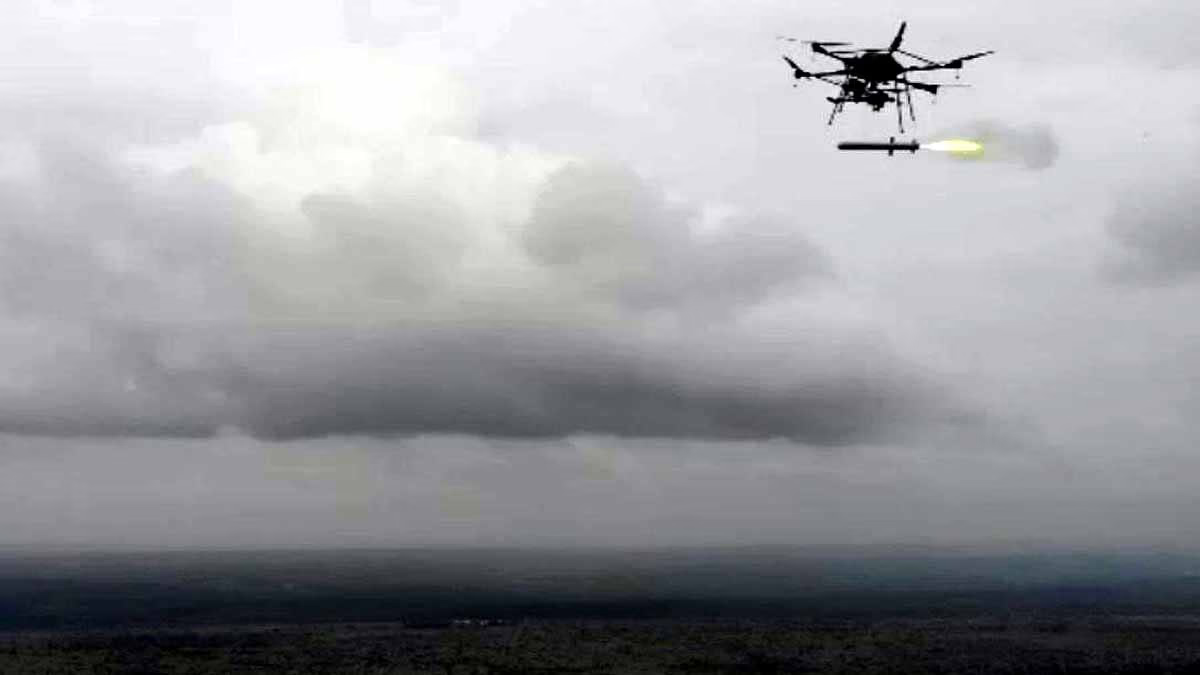On July 25, 2025, India took a significant step in strengthening its defense prowess. The Defence Research and Development Organisation (DRDO) successfully conducted a test of the UAV Launched Precision Guided Missile (ULPGM)-V3 at the National Open Area Range (NOAR) test range in Kurnool, Andhra Pradesh.
This missile is an enhanced version of the ULPGM-V2, also developed by DRDO. The smart missile is drone-launched and can accurately destroy enemy targets round-the-clock, regardless of weather conditions.
Learn more about the Vampire weapon that fired 40 rockets in 20 seconds
What is the ULPGM-V3 Missile?
The ULPGM-V3, or Unmanned Aerial Vehicle Launched Precision Guided Missile-Version 3, is a high-tech missile launched from drones. Weighing just 12.5 kg, it can deliver precise attacks over a distance of 4 km during the day and 2.5 km at night.
Developed under the self-reliant India and Make in India missions, this indigenous missile effortlessly destroys enemy tanks, bunkers, and mobile positions.
This fire-and-forget missile autonomously homes in on targets after launch. It features a two-way data link, allowing target adjustments even post-launch.
The Strength of ULPGM-V3
Known for its advanced technology and power, this missile boasts several exceptional features...
High-Definition Dual-Channel Seeker:
Featuring an Imaging Infrared (IR) seeker that precisely seeks targets day and night. Its passive homing system allows it to evade radar detection.
Three Types of Warheads
Anti-Armor:
Designed to destroy modern tanks equipped with rolled homogeneous armor (RHA) and explosive reactive armor (ERA).
Penetration-Cum-Blast:
Effective against bunkers and strong structures.
Pre-Fragmentation:
Capable of causing destruction over a wide area, taking out enemy troops and equipment.
Discover more on how unarmed Cambodia was airstruck by Thailand, and understand the power dynamics
All-Weather and All-Terrain Operations
The missile operates across plains and mountainous regions (such as Ladakh). Its dual-thrust solid propulsion engine drives it swiftly over long ranges.
Lightweight and Smart Design
Weighing only 12.5 kg, it can be launched from small drones (like hexacopters). Its laser-guided technology and top-attack mode excel at striking tanks' vulnerable upper parts.
The IR seeker captures targets' heat signatures, enabling attacks even in darkness. The dual-thrust engine functions in two phases—rapid flight followed by steady target approach. The data link ensures real-time communication between the drone and the command center.
How Was the Test Conducted?
On July 25, 2025, the ULPGM-V3 was tested at the NOAR test range in Kurnool. It was launched using an indigenous drone developed by Bangalore-based startup New Space Research Technologies. The test evaluated the missile's anti-armor mode, focusing on tank destruction capabilities.
Target:
A mock tank resembling modern armored vehicles.
Result:
The missile destroyed the target with pinpoint accuracy, whether stationary or moving.
Specialty:
It performed excellently day and night, and in elevated terrains.
DRDO is now preparing to integrate this missile with long-range, high-endurance drones (e.g., lethal UCAVs).
Cambodia vs Thailand: The sixth conflict this year—witness devastation from Ukraine to Iran-PAK
Who All Contributed to Its Development?
The ULPGM-V3 is a testament to self-reliant India, developed through collaboration between several DRDO labs and private companies...
DRDO Labs
Research Centre Imarat (RCI):
Developed the missile's guidance and seeker systems.
Defence Research and Development Lab (DRDL):
Propulsion system.
Terminal Ballistics Research Lab (TBRL):
Warhead design.
High-Energy Materials Research Lab (HEMRL):
Explosive technology.
Integrated Test Range (ITR):
Testing site.
Defence Electronics Research Lab (DLRL):
Data link and electronic systems.
Private Partners
Adani Defence and Aerospace:
Manufacturing and parts supply.
Bharat Dynamics Limited (BDL):
Production partner.
30 MSMEs and Startups:
Small components and technology support.
New Space Research Technologies:
Indigenous drone assisting in missile launch.




